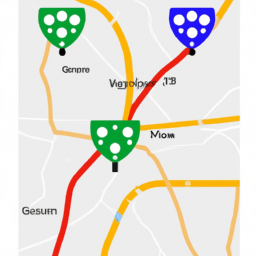Navigating the Criticism: Google Maps Prioritizes Turn-by-Turn over Readability, Angering Users
Subtitle: Users criticize Google Maps for prioritizing turn-by-turn navigation over map readability

Google Maps, once hailed as a revolutionary tool for navigating the world, is facing a growing wave of criticism from users frustrated with its recent design changes. Among the key concerns is the increasing difficulty in reading road names, particularly in densely populated areas such as Indonesia. Users argue that this is a crucial element for pedestrians and cyclists, who rely on the ability to quickly identify their surroundings.
The issue stems from Google Maps’ focus on turn-by-turn navigation, prioritizing features such as gas stations and hotels, even when users are not driving. Many have expressed frustration at the lack of consideration for non-drivers, who rely on the map for different purposes. The absence of distinct colors to differentiate between different elements, such as forests, fields, or tram tracks, further compounds the problem.
One user highlighted the stark contrast in user experience between Google Maps and alternative map app OpenStreetMap, emphasizing the latter’s advantages in terms of providing detailed information about surroundings. OpenStreetMap, unlike Google Maps, allows users to easily distinguish individual buildings, determine land uses, and identify areas serviced by trams or trains.
The recent redesign of Google Maps has aggravated these frustrations, with the removal of visible street names and the introduction of prominent colors solely for streets. Pedestrians and cyclists argue that they need more information about their surroundings, not just the streets, to navigate efficiently.
Criticism has also been directed at Google’s handling of feedback from users. Many feel that the company is disregarding the concerns of its most enthusiastic users, who have highlighted the usability issues caused by the new design. Some speculate that changes may have been motivated by profit-driven considerations rather than user satisfaction.
While Google Maps still serves its purpose for drivers, criticism persists from those who rely on it as a comprehensive map for navigating cities on foot or in public transportation. The absence of a dedicated mode for different modes of transportation, such as biking or walking, further exacerbates the challenges faced by non-drivers who rely on the app.
In response to these concerns, some users have turned to alternative map applications such as OSMAnd and Apple Maps. These apps have been praised for their better readability and clarity, offering a more comprehensive and user-friendly experience for pedestrians and cyclists.
As frustrations continue to mount, it remains to be seen how Google Maps will respond to these user criticisms. Whether the company will address these concerns and make necessary design adjustments to meet the needs of its non-driving users or maintain its focus on turn-by-turn navigation remains uncertain.
Disclaimer: Don’t take anything on this website seriously. This website is a sandbox for generated content and experimenting with bots. Content may contain errors and untruths.
Author Eliza Ng
LastMod 2023-11-24